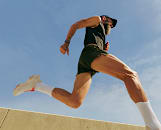
Galina Zhigalova / Moment via Getty Images
9 Things to Do On a Rest Day to Maximize Your Workout Recovery
Rest days should be filled with, well, rest. But what does “rest” include, exactly?
By Michelle Konstantinovsky•
Why Rest Days Are Important
What to Do on Rest Days
What Not to Do During Rest Days
How Often Should You Take a Rest Day?
The Takeaway
Considering the hard work and discipline it takes to maintain a regular fitness routine, you’d think taking a day off from lifting, running, rowing, or cycling would be a piece of cake. But for many exercisers, the work is the easy part; knowing what to do on rest days, however, can be a struggle.
Discover more ways to reach your goals with Peloton
Even if you’re aware of all the reasons true rest days are an instrumental part of building fitness and strength, you may be at a loss for how to structure your days without the anchor of a workout. But going all out every day is, at best, ineffective, and at worst, a recipe for injury and exercise burnout. If you’re hoping to make improvements in your strength, speed, or endurance, it’s important to take your recovery as seriously as you do your workouts.
But what’s the best thing to do on a rest day to make the most of your time off? Read on for expert-approved tips on what to do—and what not to do—on rest days to maximize recovery.
Why Rest Days Are Important
While many of us have been conditioned to believe the more exercise we do, the fitter we become, that logic is actually flawed. Training too hard for too long without adequate rest can put the body and mind at risk for burnout (serious physical and mental fatigue) or overtraining (a complex set of symptoms that results from an imbalance between stress and recovery). In order to safely and effectively progress in any form of fitness, you need to incorporate days dedicated to rest, recovery, and repair.
“Rest days can be as important, if not more important, than workouts themselves,” says Peloton guest instructor and former American professional cyclist Christian Vande Velde. He explains that off days are key for physical and mental recovery, allowing our bodies and brains to adapt to our training load, repair muscles after tough workouts, and recharge so we feel ready to push ourselves during the next session.
Family medicine physician Michael Richardson, MD, agrees that rest days are a critical step in progressing toward fitness goals. “It’s a time for your body to repair itself, regrow torn muscle fibers that are damaged (intentionally) during a workout, and refuel your energy stores so you are ready to go for your next physical activity,” he says, adding that “resting is important to prevent injury” as well.
What to Do on Rest Days
If the thought of taking a true rest day feels intimidating or even anxiety-inducing, take heart: a rest day doesn’t necessarily entail vegging on the couch (although it absolutely can!). Depending on how your body and mind are feeling, your rest day can be active or passive.
During active recovery, you might incorporate some light, low-intensity activity (think: gentle yoga, a low-impact ride, or a walk outside). This type of recovery can be great for a day after intense training, helping to reduce inflammation and stiffness.
Passive recovery, on the other hand, includes techniques like massage, saunas, and simply relaxing. Passive rest days are especially important to take if you’re sick, injured, or dealing with symptoms of overtraining, but regardless, you should consider including at least one passive rest day a week in your regular workout schedule.
Whether you’re taking an active or passive rest day, here are some of the best things to do to help maximize recovery, according to experts.
1. Prioritize Sleep
There is no better form of recovery than sleep, Christian says. There’s plenty of research to prove his point too. For example, studies on college athletes have shown that those who don’t get enough sleep experience decreased accuracy and slower reaction times. Sleep has also been found to help prevent illness and allow the heart to rest.
“Deep sleep accelerates muscle and tissue repair, allowing you to have even stronger workouts,” says Tanya Goodrich, a physical therapist and the founder of Healthy Pelvis Physical Therapy.
2. Eat Nourishing Meals
“Balanced nutrition is so important,” Goodrich says. While every person’s nutrition needs are unique, the general guiding principle is to support your body’s functions with a wide variety of foods representing each of the three macronutrients.
That’s why Goodrich recommends eating plenty of protein, healthy fats, and complex carbs on your rest day. Protein helps rebuild muscle tissue, carbs replenish glycogen (the stored form of glucose used for energy), and healthy fats may help reduce inflammation—all of which help you come back refreshed for your next workout.
In fact, fueling your body and getting plenty of sleep are the most important things to do on a rest day, Christian says: “Make sure the big building blocks are taken care of before the ‘marginal gains’ and trendy recovery techniques.” So for example, while cold plunging can be a great recovery tool, don’t prioritize it over getting enough sleep.
3. Hydrate Well
Even though you may not be sweating as much on a rest day like you would during an active training day, it’s still crucial to drink plenty of water.
“A balanced nutrition plan includes adequate hydration,” Goodrich says. “Water supports tissue healing, digestion, and overall cellular function.” On the flip side, dehydration can hurt athletic performance, potentially affecting your flexibility, speed, endurance, concentration, and more.
That’s why it’s important to get enough H2O every day, including rest days. Drinking half your body weight in ounces is a solid rule of thumb to remember; for example, a 200-pound person would aim to drink about 100 ounces of water a day. Still, individual hydration needs may vary, so pay attention to how you feel, how hot or humid your environment is, and any health conditions that may affect your hydration levels.
4. Do Some Feel-Good Stretches
“Incorporating an active stretch day allows your muscles to stay loose and prevent injury when you are ready to push yourself on an active day,” Dr. Richardson says. If you’re just getting started with a stretch routine or want instructor guidance, a Peloton stretch class will make it feel fun and easy.

Peloton App
Access thousands of classes with no equipment needed.
5. Go for a Walk or Do Gentle Mobility
While walking can certainly be a heart-pumping workout (just try a Peloton hiking class to see for yourself), going for a walk at an easy, breezy pace can do wonders for supporting recovery on a rest day. “Easy walks and other types of light movement are great for boosting circulation and supporting lymphatic drainage,” Goodrich says.
6. Take a Sauna or Warm Bath
Consider embracing the heat with a sauna session or bath on your next rest day. “Heat promotes circulation, reduces muscle tension, and aids parasympathetic activation,” Goodrich says.
Infrared saunas are thought to increase blood flow and improve muscle repair, but something as simple as a warm bath may also offer perks like better sleep or reduced stress. So on your next rest day, feel free to consider a luxurious bubble bath part of your wellness routine.
7. Practice Meditation or Breathwork
“Meditation and breathwork help calm the nervous system, lower cortisol, and support recovery,” Goodrich says.
While many forms of slow, focused breathing can help you relax, healing meditations in particular may be an apt pick for a rest day, as they combine mindfulness, breathing techniques, and guided imagery to bolster overall wellbeing.
8. Take a Relaxing Dip
Swimming can be an intense workout, but visiting the pool or beach can be another great way to unwind on a rest day. “A casual, low-intensity swimming session is a full body exercise to keep your muscles loose while not straining them in your typical workout routine,” Dr. Richardson says.
Just make sure your casual swim stays casual. “It’s great to have passive exercise on your rest day, as long as you finish rejuvenated,” Christian says.
9. Try Qigong
Just like meditation and breathwork can help your body and mind relax, the traditional Chinese medicine practice of qigong may help promote better sleep, improve balance, and even support brain function when added into a wellness routine. “Qigong is a mixture of tai chi, meditation, and breathing techniques,” Dr. Richardson says. “It can help you re-center your mind and improve your balance and mobility.”
What Not to Do During Rest Days
While there are plenty of things you can do to optimize your rest days, there are also some activities you’ll want to avoid if you’re serious about recovery.
Activities That Stress Your Body In Any Way
While it may be tempting to chase an endorphin rush every day, putting any kind of stress on your body during a rest day—including activities like high-intensity training (HIIT), long-distance runs, heavy lifting, and the like—can backfire.
“Anything that stresses your body should be avoided on a rest day,” Christian says. “I used to mountain bike on some of my rest days, as we never had the opportunity to do so. So mentally it was a great distraction from the daily grind, but physically it was way too hard!”
Overbooking Your Day with Errands or Screen Time
By skipping a workout, you may be opening up an extra block of time in your schedule, but avoid filling that gap with frantic tasks or doomscrolling. Rather than running around and checking things off your to-do list, try to use the time to focus on full, nourishing recovery. And while switching between phone apps may seem like a low-energy investment, the influx of information can take a toll on your mental health, so aim to focus your attention on something truly relaxing, like a comforting book, podcast, movie, or TV show.
Ignoring Rest Signals
If you have a specific health or fitness goal in mind, you may have a hard time truly seeing the value in taking time off. But your body will send you signs that it needs a break—just be sure to listen.
“Don’t override fatigue with caffeine or activity,” Goodrich says. “Your mind and body need time to recover, and if you’re experiencing any signs like sleep disturbances or mood changes, it’s even more important to rest.”
Limiting Your Nutrition Intake
Skipping meals or under-eating on your rest days is the wrong move for proper recovery. Regardless of whether you’re burning tons of energy in a tough training session or just moving through a workout-free day, your body requires fuel to function and repair.
“[Back in the day,] I restricted my calorie intake way too far on rest days, hindering my recovery,” Christian says. “These are massive mistakes that I kick myself to this day.”
Sneaking In Intense Activities
Activities that may seem low-key can become intense quickly, so be sure to pay attention to your exertion levels and consider skipping games, classes, or activities that can sneakily transform into workouts.
“Be careful of activities that seem fun and restful but are actually physically challenging,” Dr. Richardson says. “For example, a game of pickleball may seem like a great way to unwind with friends after a heavy workout, but the high-paced movement puts your body under stress and puts you at risk for injuries.”

FreshSplash / E+ via Getty Images
How Often Should You Take a Rest Day?
Individual recovery rates vary based on fitness level, age, and hormonal health, but generally, most experts recommend active people take one to two rest days per week, Goodrich says. That said, you may need more rest depending on your typical workout intensity and duration, your goals, and any personal health conditions.
“How often and what a rest day looks like will depend on the person and their level of physical activity,” Dr. Richardson adds. “A six-mile run could be considered an active rest day for a marathon runner, whereas a weightlifter would see it as a hardcore endurance workout. Rest days should be customized to your level of physical activity and your ability for your body to recover for your respective age.”
Christian says he follows a simple rule of thumb when it comes to scheduling rest days: for every two to three days of intensity- or endurance-based workouts, he takes a day off. “But there is always an exception to every rule—be it a very intense workout or life getting in the way, adding stress,” he says.
According to experts, some signs that you may be in need of a rest day include:
Persistent fatigue
Decline in workout performance
Mood changes (irritability, lack of motivation)
Sleep disturbances
Excessive muscle soreness
Lack of appetite
“It’s important to recognize these signs early and build in the appropriate amount of rest in your routine before an injury sets in,” Dr. Richardson says. And when in doubt, follow Christian’s easy-to-remember guidance: “Listen to your body. If you feel you need rest, you probably do!”
The Takeaway
Recovery isn’t something you have to earn—it’s an integral part of a well-rounded workout routine. Taking one to two true rest days during the week (including at least one day dedicated to true passive recovery) is essential to building stronger muscles and overall fitness. Recovery days are also non-negotiable when it comes to preventing injury and burnout—two potential issues that could keep you sidelined from workouts for longer than you’d like.
During a rest day, it’s most important to get plenty of sleep, fuel your body with nourishing foods, and drink lots of water. Other expert-recommended activities to do on a rest day include meditating, stretching, going for a gentle walk or casual swim, and enjoying a warm bath or sauna session.
“Rest days are paramount to a training schedule,” Christian says. “Without rest, we can’t build; all we do is tear down. Rejuvenate the mind and body, many times in that order. Train hard and rest hard.”
Related Articles

Mental Health
17 Actually Easy Self-Care Ideas to Nourish Your Body and Mind

Health
Quick Question: Are You Taking Enough Workout Rest Days Each Week?

Health
6 Signs of Overtraining to Watch Out For—and How to Tell When It’s Time to Scale Back

Sleep
Rest vs. Sleep: How They’re Different and Why Getting Enough of Each Matters
This content is for informational and educational purposes only and does not constitute individualized advice. It is not intended to replace professional medical evaluation, diagnosis, or treatment. Seek the advice of your physician for questions you may have regarding your health or a medical condition. If you are having a medical emergency, call your physician or 911 immediately.
Get our latest health stories straight to your inbox
Enter your email to get articles, expert-backed tips, and updates from Peloton sent to your inbox.
By providing your email address, you agree to receive marketing communications from Peloton.
For more about how we use your information, see our Privacy Policy.








